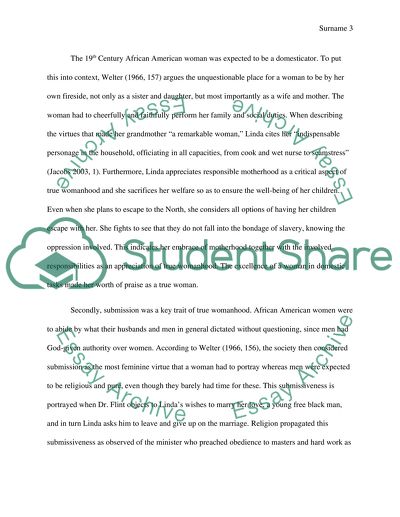Cite this document
(“Incidents in the Life of a Slave Girl Essay Example | Topics and Well Written Essays - 1500 words - 1”, n.d.)
Incidents in the Life of a Slave Girl Essay Example | Topics and Well Written Essays - 1500 words - 1. Retrieved from https://studentshare.org/history/1487977-incidents-in-the-life-of-a-slave-girl
Incidents in the Life of a Slave Girl Essay Example | Topics and Well Written Essays - 1500 words - 1. Retrieved from https://studentshare.org/history/1487977-incidents-in-the-life-of-a-slave-girl
(Incidents in the Life of a Slave Girl Essay Example | Topics and Well Written Essays - 1500 Words - 1)
Incidents in the Life of a Slave Girl Essay Example | Topics and Well Written Essays - 1500 Words - 1. https://studentshare.org/history/1487977-incidents-in-the-life-of-a-slave-girl.
Incidents in the Life of a Slave Girl Essay Example | Topics and Well Written Essays - 1500 Words - 1. https://studentshare.org/history/1487977-incidents-in-the-life-of-a-slave-girl.
“Incidents in the Life of a Slave Girl Essay Example | Topics and Well Written Essays - 1500 Words - 1”, n.d. https://studentshare.org/history/1487977-incidents-in-the-life-of-a-slave-girl.


